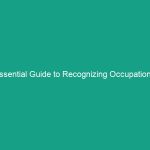Introduction
Good morning team! Today, we are going to discuss an incredibly important topic: Essential Tips for Effective Hazard Control in Workplace Safety. Understanding how to control Hazards is not just about compliance; it’s about ensuring that everyone goes home safe and sound at the end of the day. In our work Environment, hazards can arise from various sources, and it’s crucial for us all to be aware of these and know how to effectively manage them.
Understanding Hazard Control
So, what exactly is hazard control? In the context of Workplace Safety, it refers to the measures and Procedures we implement to minimize or eliminate risks associated with various Hazards. Effective hazard control is vital as it directly impacts our daily operations, productivity, and overall well-being.
Many people may think that hazard control is only the responsibility of the Safety officer or management; however, it requires the active participation of every employee. By understanding our roles, we can create a safer workplace together.
Common misconceptions include the belief that hazard control is overly complicated or that it only involves physical Safety Measures. In reality, effective hazard control encompasses a wide range of strategies, including administrative controls, personal protective equipment (PPE), and Training.
Key Hazards, Risks, and Safety Considerations
Identifying specific hazards in our workplace is the first step in effective hazard control. Some common hazards include:
- Slips, trips, and falls: Often caused by wet floors, poor lighting, or cluttered walkways.
- Hazardous materials: Chemicals or substances that can cause harm if not handled properly.
- Machinery accidents: Risks associated with improper use of equipment or lack of Maintenance.
- Ergonomic hazards: Poor workstation design leading to strain or injury.
Ignoring safety protocols can lead to serious consequences, including injuries, legal issues, and financial losses. For example, a slip and fall incident not only affects the injured employee but can also impact team morale and productivity.
Best Practices, Procedures, & Actionable Advice
To effectively manage hazards, here are some Best Practices and procedures that we should all follow:
1. Conduct Regular Hazard Assessments
Regularly identifying potential hazards is essential. This can be done through:
- Workplace inspections by safety officers.
- Employee feedback and reporting of unsafe conditions.
- Reviewing incident reports to identify patterns.
2. Implement Control Measures
Once hazards are identified, appropriate Control Measures must be implemented. This can include:
- Engineering controls, such as machine guards or ventilation systems.
- Administrative controls, including changes in work procedures or schedules.
- Providing necessary PPE, such as hard hats, gloves, or Safety Goggles.
3. Provide Training and Resources
Training is crucial in ensuring that all employees understand the hazards and the necessary Precautions to take. Regular safety training sessions should cover:
- Proper use of equipment and PPE.
- Emergency procedures and evacuation plans.
- Reporting unsafe conditions and near misses.
4. Encourage a Safety Culture
Creating an environment where safety is prioritized can significantly reduce incidents. Encourage open communication about safety concerns and recognize employees who exemplify Safe Practices. For example, consider implementing a “safety champion” program where employees can nominate peers who take extra steps to ensure Workplace Safety.
5. Learn from Incidents
When accidents occur, it’s vital to analyze the situation to prevent future incidents. Conduct a thorough investigation to understand what went wrong and share the findings with the team to promote learning.
Regulations, Standards, and Compliance
Understanding and adhering to safety Regulations is critical. Relevant Standards include:
- OSHA Standards: These regulations set forth requirements for Workplace Safety and health.
- ISO 45001: An international standard for Occupational Health and safety management systems.
- Company Safety Policies: Familiarize yourself with our organization’s specific safety protocols.
Compliance is not only a legal obligation but plays a significant role in protecting employees and reducing the likelihood of accidents. It’s essential for every team member to understand these regulations and integrate them into their daily activities.
Employee Engagement & Discussion
Engaging employees in safety discussions is crucial. Here are a few questions to consider:
- What specific safety challenges have you encountered in your work?
- How can we improve our current hazard control measures?
- What additional training or resources would help you feel safer at work?
Feel free to share your thoughts and experiences. Your input is invaluable in creating a safer work environment for all of us.
Conclusion & Key Takeaways
In summary, effective hazard control is a collective responsibility that involves identifying risks, implementing Best Practices, and adhering to regulations. By being proactive and engaged in Safety Measures, we can make our workplace a safer place for everyone.
Let’s commit to prioritizing safety in everything we do. Thank you for your attention and for your dedication to keeping our workplace safe!


